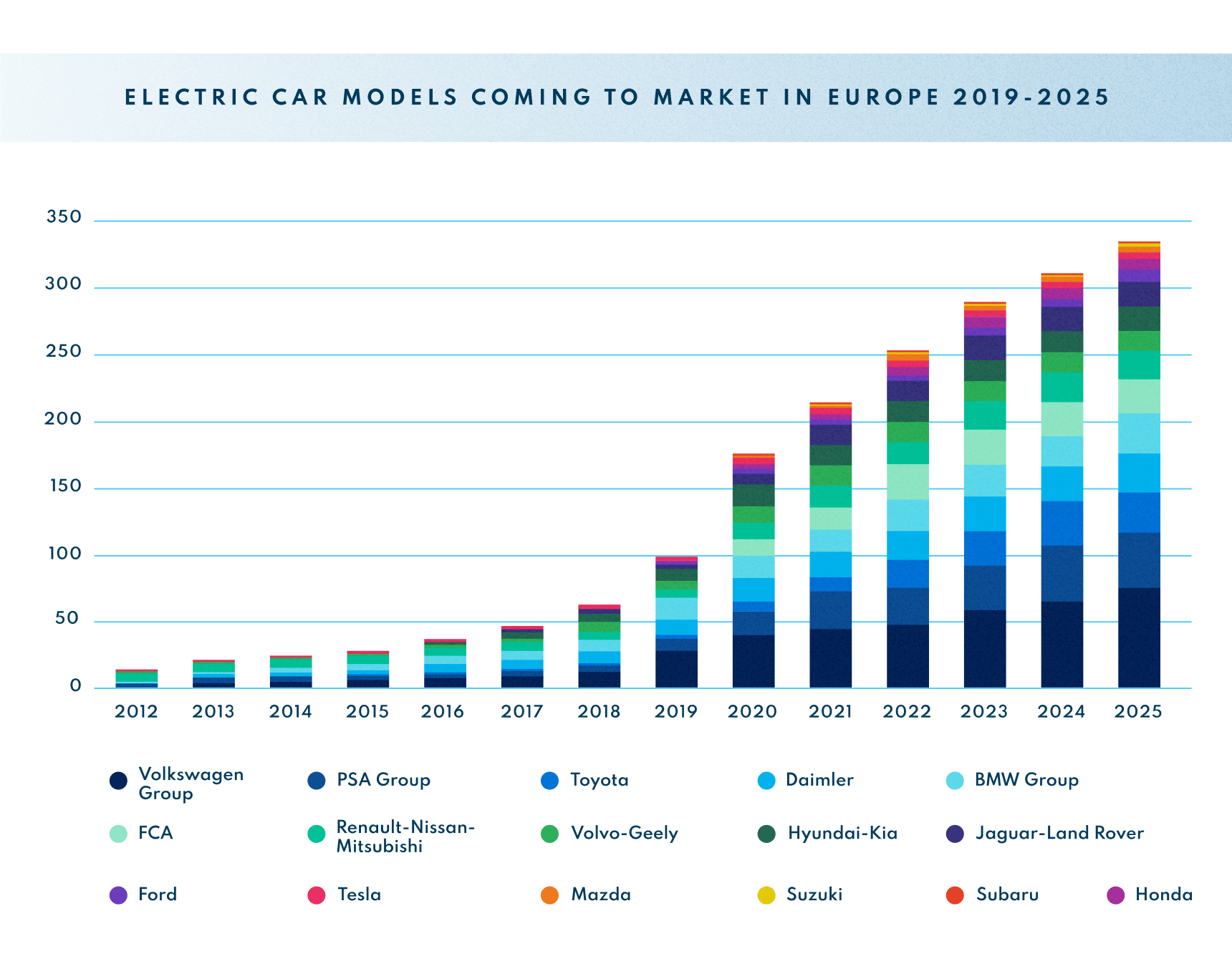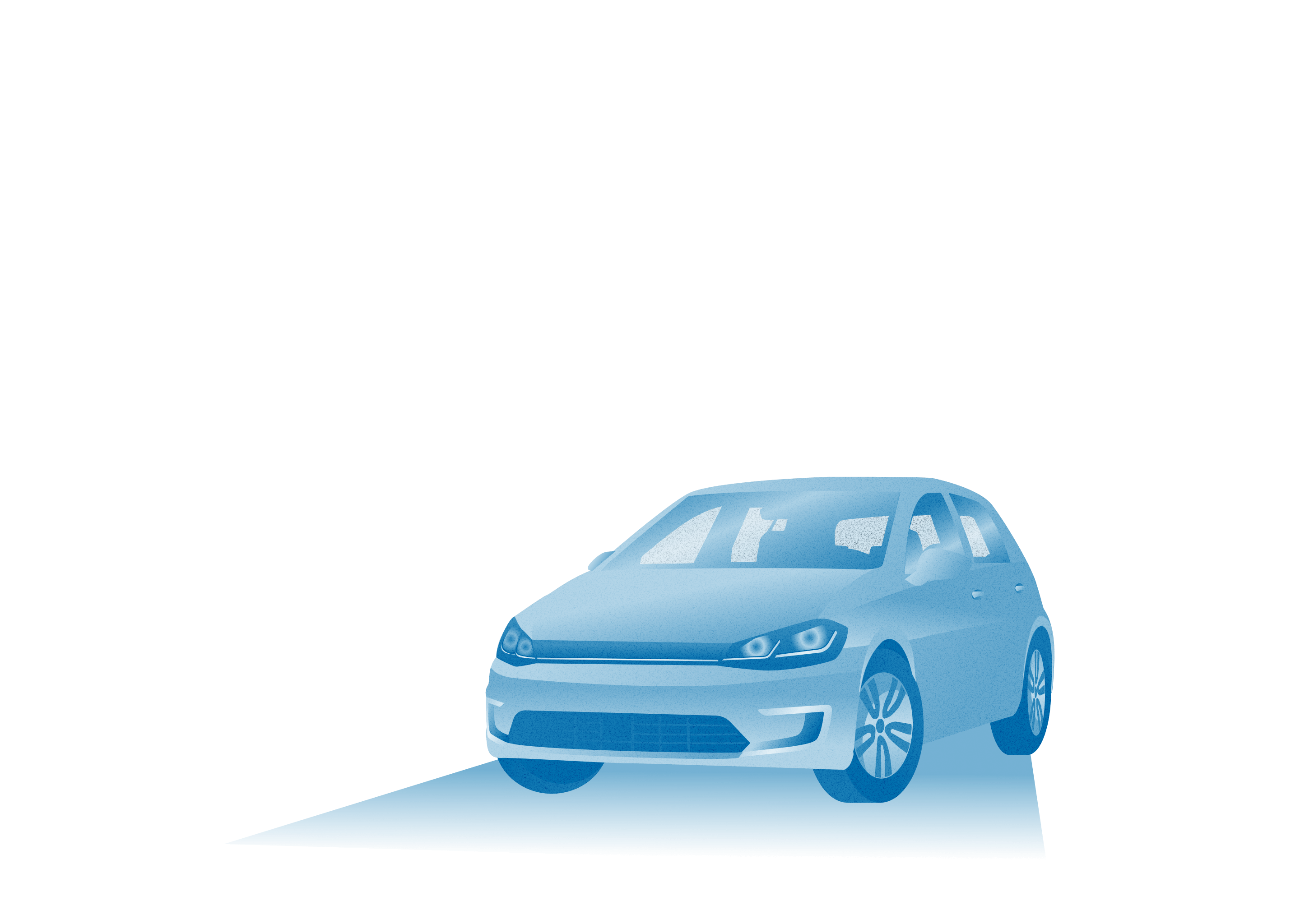In December 2019, the EU’s chief executive, Ursula von der Leyen walked on to a podium in Brussels and presented her grand plan for making the bloc’s economy sustainable. Contained in her European Green Deal was one short sentence which, though unremarked upon, will have a major impact on Europe’s industrial strategy, transport system and climate and environment policies for decades to come: the EU would have a “clear pathway from 2025 onwards towards zero-emission mobility”. It was the first time the EU executive committed to zero emissions - not low or alternative - as the aim for transport.
It means that tailpipe air pollution and CO2 emissions from cars - which are responsible for 44% of transport’s carbon emissions in Europe - will come to an end. No more uncertainty about the ultimate fate of the internal combustion engine; all that’s left to do is decide its end date.
End of the INFERNAL combustion engine?
The results of T&E’s campaigning on the climate impact of cars are evident: in January, a new law to cut carbon emissions from new cars and vans by 15% in 2025 and 37.5% (vans 31%) in 2030, compared to 2021 levels, was approved. While the new targets narrow the regulatory gap with China - and put Europe back in the clean-tech driving seat - they fall well below what’s needed to meet the goals of the Paris Agreement. That will require around 40% of new cars sold in 2030 to be electric.
The new targets were a confirmation for the car industry that tailpipe emissions would need to end. Two months later, the world’s biggest selling carmaker, Volkswagen, pointed the way forward when it announced its €60 billion plan to sell 70 electric models and make 22 million electric vehicles in the next decade. That and its commitment to end the development of the internal combustion engine after 2026 were a game changer for the automotive industry, T&E said.
Meanwhile France adopted a mobility law banning combustion cars in 2040; Spain too is aiming for that date while the Netherlands and Denmark want to go all-zero emission by 2030. In Britain, the new government brought forward the date for all-zero emission car sales to 2035. Cities too are joining the queue. Amsterdam, Paris and Brussels have announced that soon their cities will only be open to zero emission mobility. The direction of travel is now clear.
Fake hybrids and the SUV bonanza
While carmakers understand the future is electric, their present is still very much fossil. Our annual car CO2 report uncovered how carmakers were boosting sales of SUVs, 36% of the market in 2018, to maximise profits in the final years before the 95g CO2 standard started to apply. As a result, new car CO2 emissions were actually increasing.
T&E remained vigilant and discovered that manufacturers were likely pushing sales of fake plug-in cars over genuine electric vehicles as they could also be used to comply with CO2 targets. In reality, such plug-in hybrids are usually big, powerful SUVs which are rarely charged because of their very limited electric range. As a result they emit as much or more CO2 than diesel or petrol cars. A year later, those fears proved well founded when we helped the Guardian uncover a plug-in hybrid testing scandal.
We also effectively debunked arguments downplaying the appeal of electric cars. In July a T&E analysis derived from IHS Markit production data showed the number of electric car models on the European market would more than triple within the next three years. After several years of timid growth, EU carmakers were expected to offer 214 electric models in 2021 – up from the 60 available at the end of 2018.
T&E’s Mission Possible report, out just before the Frankfurt motor show, showed the auto industry were gearing up to sell up to one million battery electric and plug-in-hybrid vehicles in the EU in 2020, proving the effectiveness of the EU car emissions rules. It also showed that electric vehicles would account for around 5% of new car sales in 2020 and about 10% in 2021.

No quick fixes
Four years after it happened, Dieselgate continued to make headlines. The number of dirty diesel cars and vans on European roads had reached 51 million, T&E’s fourth annual analysis showed. There was an increase of 18% in 2018 and a 74% rise since 2016, as carmakers continued to sell poorly performing technology to unaware customers.
We uncovered that three out of every four highly-polluting diesel cars caught in the 2015 Dieselgate had still not been recalled for fixes. And those still waiting for the cheap, least effective form of fixes – software recalls – would have to wait for another two years.
"More than 250 european cities now have a low emission zone, some of which will soon become zero-emission zones. And from 2025 some EU countries want to completely ban new cars with combustion engines. This emerges from a report by the European environmental association T&E."
Der Tagesspiegel - 14/09/2019
While governments failed to tackle the dangerous legacy of Dieselgate, mayors across Europe took bold action. Faced with citizens and courts demanding clean air, Low and Zero Emission Zones were introduced in more than 250 European cities. And these policies work, as T&E’s analysis showed. Yet, even the most successful schemes are not immune from backlash. Last summer, the newly elected mayor of Madrid pledged to reverse the hugely successful ‘Madrid Central’ zone that had completely reshaped the mobility in the centre. But he underestimated how attached the Madrileños already were to fresh air and more public space. T&E teamed up with local NGOs to show that ‘Madrid Central’ was one of the most effective clean air policies in Europe (reducing nitrogen dioxide concentrations by up to 32%). We also alerted the European Commission about regressions, helped promote a petition that more than 240,000 citizens signed and joined a street rally of 60,000 people. These efforts proved successful: the mayor promised to improve, not scrap, the scheme and his own coalition partners continue to oppose decisions that would make air pollution worse again.
In the UK too T&E took the fight to the UK government, which announced an air pollution plan that simply repeated existing strategies that have failed to clean up transport. The Clean Air Strategy published in October did not even set out when nitrogen dioxide (NOx) limits, which are widely breached in British cities, would be achieved. Effective new emissions controls would need to be proposed for the main source of NOx emissions in urban areas, diesel cars, T&E warned.
Taken for a ride
On top of diesel’s air pollution, cities in the UK and elsewhere in Europe are also suffering with increased congestion thanks to ride-hailing services like Uber. Data compiled by Euromonitor for T&E showed a surge in the number of Uber drivers in the past few years in London and Paris. The analysis estimated that in the two cities alone, the emissions of Uber taxi services could be as high as half a megatonne of CO2 - 515 kilotonnes of CO2. This is equivalent to adding the CO2 emissions of an extra 250,000 privately owned cars to the road. To add to concerns, French government data from 2017 showed that 90% of the registered private hire vehicles, which include Uber, were diesel cars.
The report helped launch the #TrueCostOfUber campaign, a broad coalition of green NGOs in the US, Germany, France, the UK, The Netherlands and Belgium, and led by T&E. Since then the campaign has helped raise awareness of the problem in six European cities: London, Paris, Berlin, Amsterdam, Brussels and Lisbon. Through petitions - with 25,000 signatures in Paris, 5,000 in Brussels - it has mobilised citizens to pressure lawmakers to take action. The aim is to make Uber help its drivers switch to zero-emission cars.
Smarter
And the arrival of electric vehicles would also save European countries hundreds of millions on their transition to renewable electricity. France, Italy, Spain, and the UK could save between €500 million and €1.3 billion each a year, according to a study for T&E, by using EVs for smart charging. Charging electric cars at the best time of day for the grid would help avoid demand peaks and provide extra storage when there is renewable electricity oversupply. This in turn would reduce the need to build additional grid storage and power plants.
However, other technological developments in automotive technology could soon require the attention of regulators. Driverless cars could increase traffic in European cities by 50% to 150% by 2050, which would be like a rush hour that lasts all day, a T&E study showed. A ‘Wild West’ unregulated increase in driverless cars – as anticipated by some in the industry – could result in 40% more CO2 emissions from cars between now and 2050, making Europe's climate goals all but impossible to achieve. However, driverless cars do have the potential to reduce vehicle activity and emissions significantly. It requires all driverless vehicles to be electric and shared. Also, crucially, cities would need to start taking space away from cars and roads and giving it back to people, including cyclists and new mobility users.



